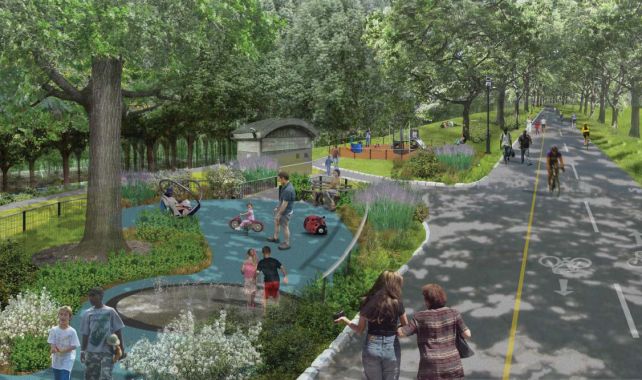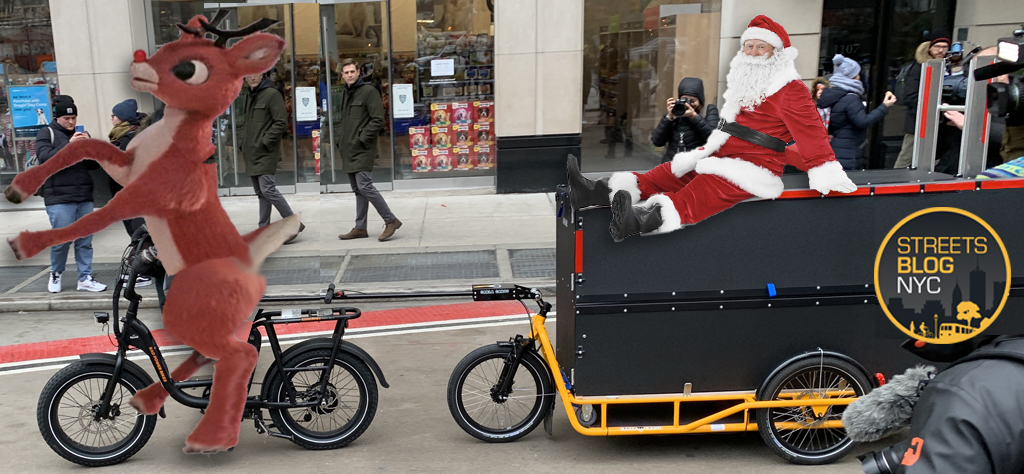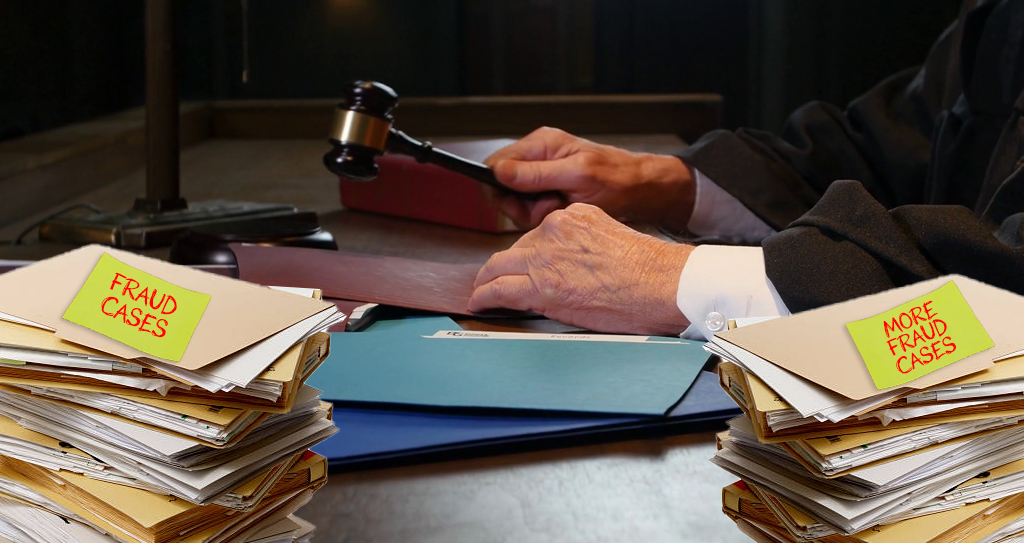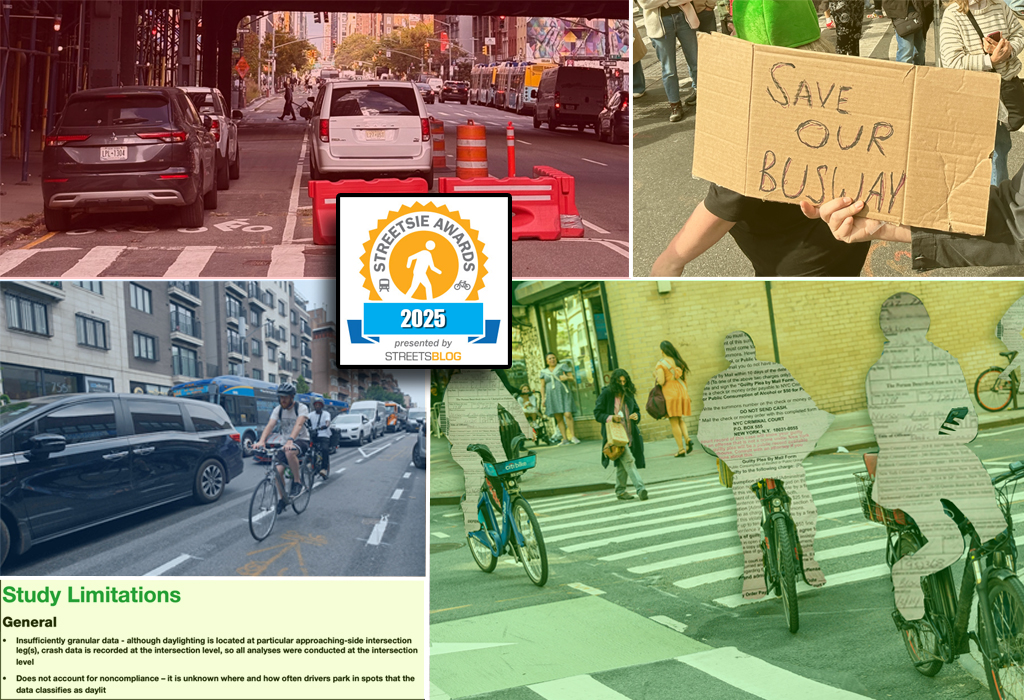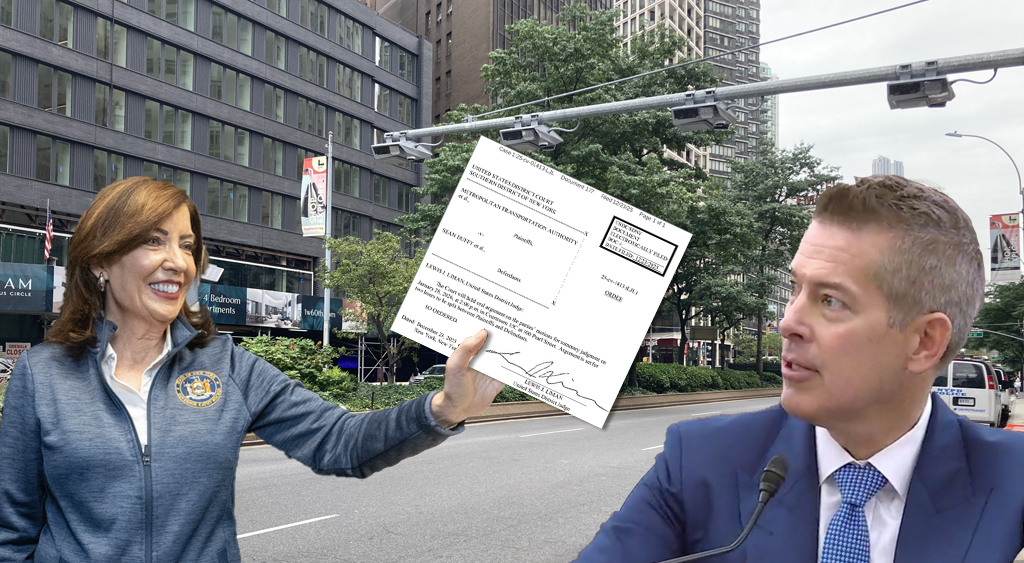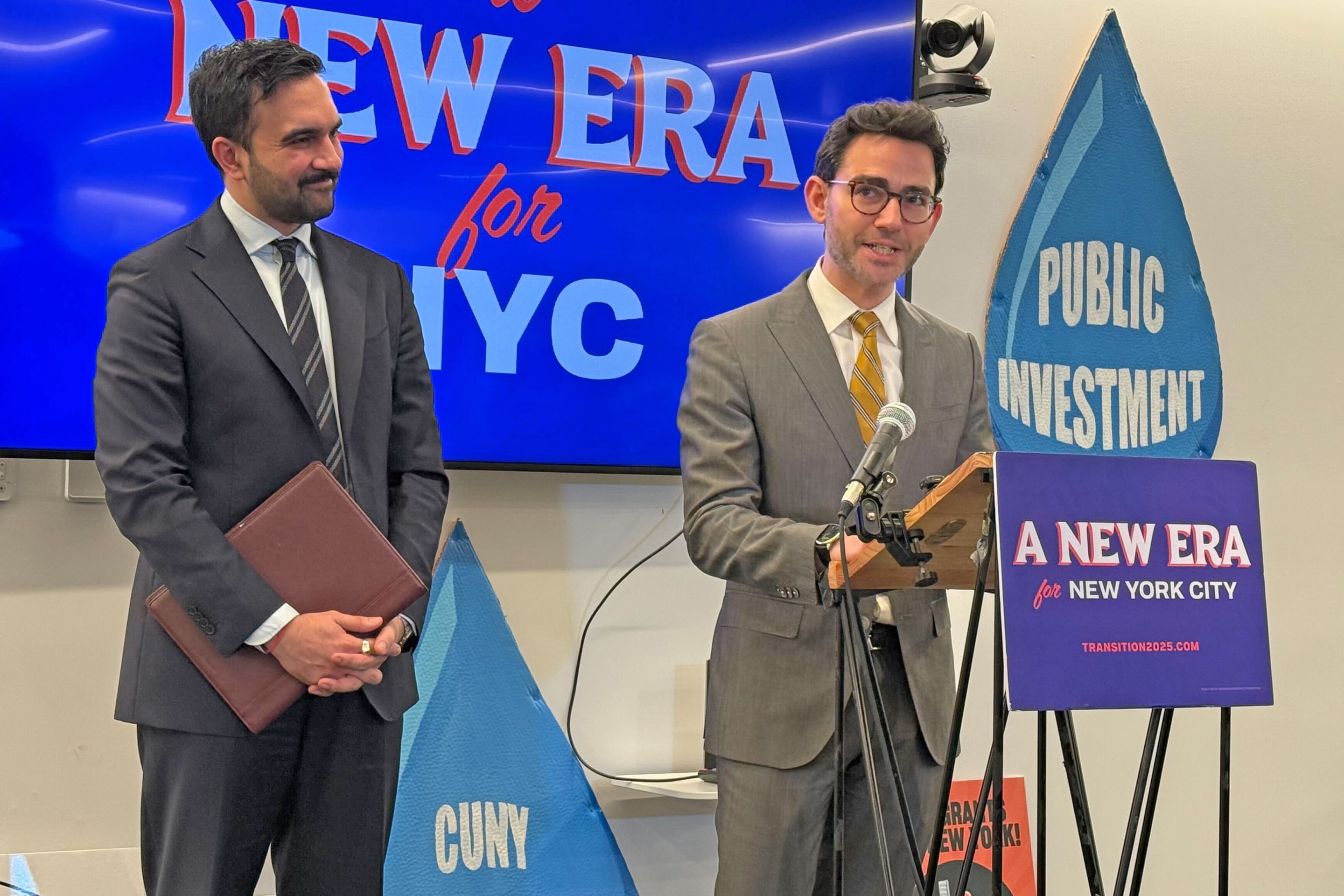The poorest New Yorkers are telling Mayor Adams in a new survey that affordable housing is more important to public safety than cops, and are demanding better conditions for pedestrians and, of course, much more parks and open space — results that bolster key pillars of the movement to make New York truly livable.
The new survey, out today from the Adams-linked group, New York City Speaks, and first revealed by Gothamist on Tuesday morning, has some topline findings that unsurprisingly seem to confirm the Adams agenda, given it was basically commissioned by his administration, including a strong showing for increasing “the number and presence of police officers in the community” as a key measure of public safety.
But the raw data released by the polling firm HRA Associates, which conducted the $2-million survey of 62,000 New Yorkers, also revealed that New Yorkers across all five boroughs want more parks, better, safe, and more reliable public transit, and improved public spaces for people, not cars.
“New Yorkers continue to demand safe bike lanes, better sidewalks, and more parks and open space — not more parking. NYC Speaks’ survey shows strong support for a more livable, equitable, and healthier city,” said Danny Harris, the executive director of Transportation Alternatives, which also commissioned its own survey that found that 83 percent of voters support adding more trees and greenery to their neighborhood, and 68 percent of voters support adding more protected bike lanes in their neighborhoods.
New Yorkers continue to demand safe bike lanes, better sidewalks, and more parks and open space — not more parking.
— Transportation Alternatives *Vote on Sammy's Law* (@TransAlt) April 5, 2022
NYC Speaks’ survey shows strong support for a more livable, equitable, and healthier city.https://t.co/FsbfBpR3J6
Harris added that TA's bold plan to reclaim a quarter of the city’s public space from cars for people, known as “NYC 25 by 25,” supports that vision. And Adams has said he supports the NYC 25x25 plan.
“New Yorkers agree that our streets must be a pathway to recovery. As we’ve laid out in NYC 25x25, our city’s leaders can meet this demand by reclaiming space from cars to invest in streets that put people first," he said.
The survey also revealed the different approaches to a safer and more livable city across varying income levels. Streetsblog crunched the raw data [here] and filtered the results for residents earning below $50,000 per year.
In response to the first question in the survey on public safety, "How can the City government make your neighborhood safer?" New Yorkers earning $50,000 or less believe first and foremost that building more affordable housing — more than sending in more cops — would make communities safer. The second highest number of votes was for increasing the "number and presence of police officers," which was closely trailed — 3,776 votes to 3,763 — by supporting using mental health professionals instead of cops. Conversely, for New Yorkers earning more than $50,000 a year, increasing the number of cops ranked fourth, behind increasing mental health and addiction treatment services, using mental health providers in lieu of cops, and building more affordable housing.
And the need for a more equitable distribution of public green space across the five boroughs is clear in the answers to questions 7, "What public infrastructure investments would you most like to see in your neighborhood?" and 12, "What kind of health services do you want to see more of in your community?" New Yorkers living in low-income communities across city have historically had less access to green space than those living in richer neighborhoods, thanks to environmental injustices dating back to the era of Robert Moses. Even the de Blasio administration's signature Open Streets program that launched during the height of the Covid-19 pandemic catered to the rich, Streetsblog reported at the time. And another Streetsblog analysis of tree cover last summer found that in many wealthier neighborhoods, the more arboreal its landscape, when compared to lower-income communities.
On question 7, "What public infrastructure investments would you most like to see in your neighborhood?" lower-income New Yorkers said they would most like to see more recreation centers and better sidewalks and street conditions. More parking for cars was a distant sixth. But among the wealthiest New Yorkers, improved transit infrastructure had the highest number of votes behind recreation centers, which was closely trailed by more green space and trash collection. More parking was an even-more distant 10th.
And on question 12, "What kind of health services do you want to see more of in your community?" low-income New Yorkers ranked "parks and open spaces" among the most important to their communities, a close second behind "grocery stores and farmer's markets," which was the most popular answer across all income brackets.
On question 18, "Which of the following would help you move around the city better?" for New Yorkers earning $50,000 or less, "feeling safer riding transit" and "better maintained transit" were the top two answers. "Safer bike lanes" was the number one non-transit answer, well ahead of "chargers for electric vehicles." Bike lanes got even more votes from the richest New Yorkers, and electric vehicle chargers even fewer.
